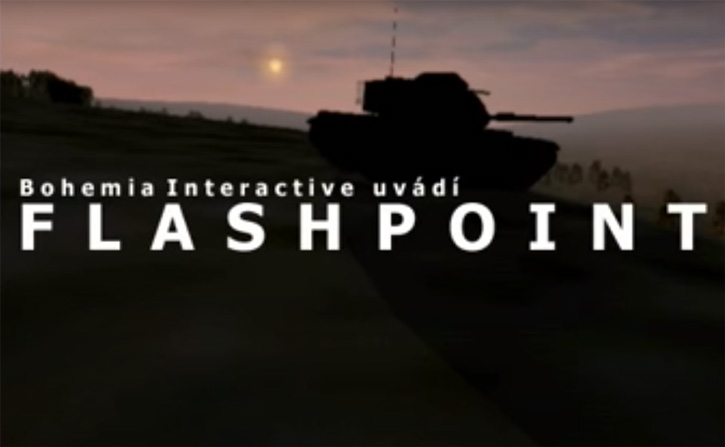
Bohemia Interactive History #2 - Turning Point
In the previous article, we left Marek Španěl and Slavomír Pavlíček just as the Pavlíček-funded game Invasion from Aldebaran – a Czech clone of Space Invaders – appeared on store shelves. It was this game that enabled the Španěl brothers to continue developing and lay the foundations for their first major game – Operation Flashpoint (now called ARMA: Cold War Assault).
Stick to your Atari
Following the opportunity to launch Invasion of Aldebaran under the banner of JRC, the Španěl brothers embarked on their next project – a video game called Gravon – which was also developed for Atari. As Marek Španěl recalls, those times did not inspire much trust in the PC, so many developers continued making games on platforms like Atari. The new game, whose full name was Gravon: Real Virtuality, was published in 1995. It was preceded, however, by a major event in Marek Španěl’s life. One year before the release, Španěl was drafted into the army.
“Getting a fraudulent status claiming I’m ‘unfit for duty’, which a lot of people did then, seemed dishonest and unsportsmanlike to me,” recalls Španěl in an interview with LEVEL magazine. Even though Španěl was drafted, he was given the opportunity to return to Prague and continue his military service while working on games thanks to being posted at a basic camp near Benešov in Central Bohemia. It was his experience of serving in the military shortly after the dissolution of Czechoslovakia, and during a more socialist conception of the army, that made Marek Španěl consider how the army worked and didn’t work, and what could be done with only a small unit of real professionals.
Enjoy new & rare footage of Gravon for Atari Falcon straight from BI CEO Marek Španěl
With ideas flourishing in their heads, the Španěl brothers began working on Gravon. In addition to Marek’s direct involvement with the military, both brothers were fascinated by the military game genre. Their goal was to create a simulator in which players could control large vehicles and take part in battles. The end result differed from their original idea, in that players were given a simulator that enabled them to control combat hovercrafts on various planets instead of vehicles on Earth. The Španěl brothers created various tasks the players had to perform for each scenario, and there was plenty of praise for the game in the media during that time.
Game journalists praised the technical side of Gravon, as well as the freedom given to players to solve individual situations. “The authors of the SUMA team certainly deserve thanks for such a great project. The same thanks also go to JRC, who took care of production and distribution. All that remains is to wish that games of a similar level will be created on other platforms as well,” concludes Marek Nepožitek in LEVEL magazine. At the time of its launch, however, Gravon meant more to the Czech game scene, and to the Španěl brothers, than was originally thought. “[The Španěl brothers] were the first to introduce a purely Czech game, albeit it entirely in English. And when I say they introduced it, I mean it was reviewed in several magazines and sold to distributors in England,” reads a quote from Narsil magazine circa 1995.
“Well, we can say that we released the game in the West, but the reality looked a little different,” says Marek Španěl. “Basically, we communicated with one German woman who helped us get about four hundred units of the game to England, and we sold the rest ourselves. For example, my brother Ondra got on a bus to Paris with suitcases full of Gravon. He sold about fifty units there and came back again,” Španěl laughs.
“We also went to an Atari show in Germany,” Slavomír Pavlíček recalls. “We had Gravon in our suitcase, and we went around the stands at an exhibition in Berlin and offered Gravon to people directly. We sold a few dozen and returned home.” Although the game was limited to a few hundred units sold, it eventually found its way to the general public. Today, Gravon can be enjoyed in its full beauty as a playable mini-game in another Bohemia Interactive game – the space simulator Take on Mars.
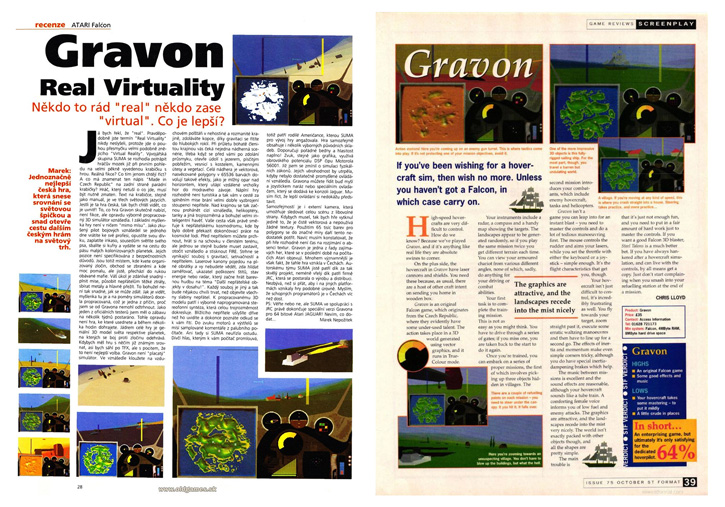
Take a look and read ancient Gravon reviews and enjoy the time when the information was shared only in print media
The wild nineties
Gravon received a lot of attention, though the game only sold a few hundred (around 400) units, despite the heroic attempts of its creators. But the main reason Gravon was never released on the 64-bit Atari Jaguar was the bankruptcy of Atari and the bitter end of Jaguar all over the world. Nevertheless, the Španěl brothers managed to create an interesting game, their cooperation with Slavomír Pavlíček remained intact, and Marek Španěl continued to work at JRC.
In the mid-1990’s, while Gravon was on the market, Marek Španěl worked with Slavomír Pavlíček on JRC’s distribution. Thanks to their close cooperation with the gaming media, both Španěl and Pavlíček had a good overview of what the Czech market looked like and understood which games had a chance to gain a foothold and made sense to invest in.
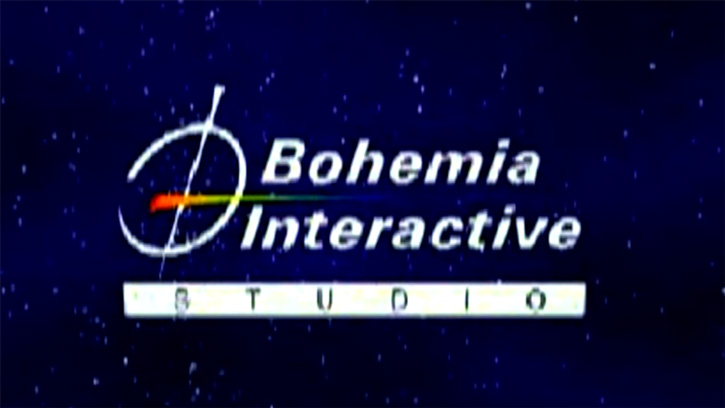
We are keeping our logo nearly intact for more than 20 years. But, look at this effect we were using back then...
As Marek Španěl recalls, the priority at the time was to publish localized foreign games, which is what JRC’s success had been built on. Slavomir Pavlíček described the market at the time in an interview with Lidovky.cz: “As a retailer, you’re always caught between a rock and a hard place. On the one hand, a publisher or distributor wants to get as much money as possible and maximum sales space for their product. On the other hand, customers want to pay as little as possible and get as much as possible for it.” Added to that was the fact that the Czech gaming scene was closely connected with publishing houses and gaming magazines. For example, JRC owned LEVEL magazine for some time, while Vision owned Score.
Following the release of Gravon, Marek Španěl was responsible for marketing and localization at JRC. That changed, however, after visiting E3 in 1998. Marek believed that marketing wasn’t right for him (despite a promising career) and decided, after reaching an agreement with Slavomír Pavlíček and his brother Ondřej, to establish a new Czech studio based on the SUMA development group. That became Bohemia Interactive Studio. "Companies were established and disappeared, so people like Vochozka or Amanita’s Jakub Dvorský were already making games at that time," Pavlíček recalls.
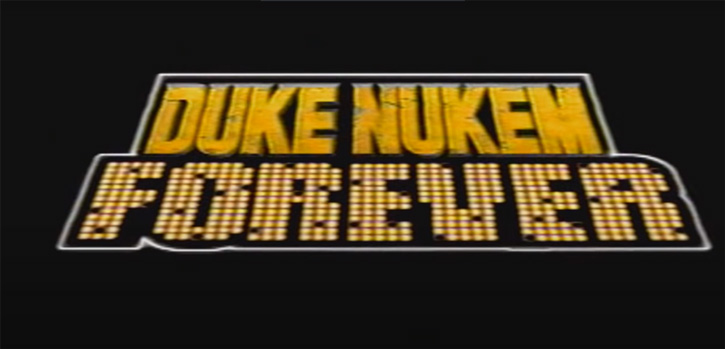
Duke Nukem Forever was also presented at E3 1998. It was released in 2011... Let's say, we did better with Operation Flashpoint :)
Poseidon and Interactive Magic
Bohemia Interactive Studio was officially established in 1999. “Originally, Bohemia Interactive was the name of our distribution company, which we separated only when it was bought by another company that also wanted the studio. But we decided to keep the studio, along with the brand, for development. The Poles did not want to be Bohemka,” says Slavomír Pavlíček with a smile.
Two years prior to that, however, the Španěl brothers were working on a prototype of their new engine – Real Virtuality – which was meant to power their new game, Poseidon. “In the beginning, there were four of us and we were totally awed by newly launched graphics cards with accelerated graphics,” recalls Marek Španěl for LEVEL magazine. Over time, the team grew to twelve. Eventually, Poseidon came to the attention of Interactive Magic which changed the name to Flashpoint.
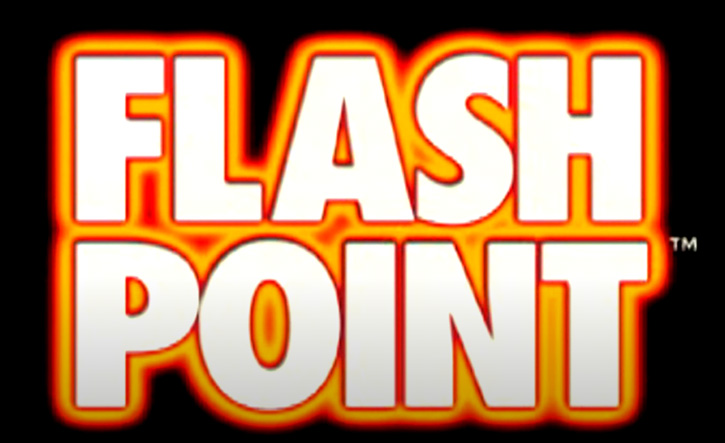
Ancient mistakes will sometimes haunt you for years to come
“These Americans have helped us a lot to professionalize,” Španěl explained to Score magazine. The development team was used to working from home, and when representatives of Interactive Magic decided to pay a visit, the team rented temporary offices for them to meet in. This was one of the many turning points in Flashpoint’s development that Marek Španěl remembers. The professional tone of the offices was good for the work, and Interactive Magic’s one hundred-thousand-dollar investment pushed the project in the right direction.
The Španěl brothers were making great strides and hoped to release Flashpoint in 1999, just as Interactive Magic had envisioned. At the same time, however, the team became carried away by their own visions and possibilities which the development of new technology offered. This led to the accumulation of ideas, stacked one on top of the other, with no one telling the development team their ideas were simply not possible. “Interactive Magic went bankrupt, and they didn’t tell us anything,” says Španěl. Ubisoft wound up buying a part of Interactive Magic. The Czech team didn’t interest them, so they withdrew their support for the project and Flashpoint ceased to exist. Ubisoft turned their attention to Red Storm studios and their war game Ghost Recon. The Czech team, meanwhile, was forced to start from scratch.
Few talented developers were able to turn their dreams and ambitions into something real and successful
Eastern promises
The team around the Španěl brothers fervently began to look for new publishers, which they eventually succeeded in doing. But first, they had to convince the gaming world that their project wasn’t just a typical action game and stood a chance of grabbing a piece of the game market. “Someone told us we couldn’t publish at the same time as Halo,” Španěl says, recalling the unenviable situation in which he and the rest of the team found themselves. Nevertheless, Bohemia Interactive managed to make a good impression with their forthcoming title via Brno’s game fair “Invex”, as well as rave reviews in the foreign media, both of which were soon noticed by publishers.
It was Invex that became one of the turning points in the development of their new game. As there was still a very close connection between making games and publishing them, JRC was one of the main driving forces behind Invex and its accompanying Gaming Hall, which featured samples of Bohemia’s upcoming game, Flashpoint. “Just like there are Steam sales today, games were sold physically at Invex. We had a caravan there which we sold our games out of and it was brutal,” recalls Španěl, laughing at the memory of his all-day stay at Invex. But that wasn’t the only memorable moment that transpired.
“Flashpoint didn’t have a publisher at the time, but we wanted to publish it in the Czech Republic at the very least. Invex was important for that, and served as kind of a lifeline,” recall both Španěl and Pavlíček. “We had a T-55 tank at Invex to promote the game. It was a huge show, and we were demonstrating Flashpoint to people right there in real-time. Even then there were fans who had come to see the tank, and it was an awesome tank! The one we have in Mníšek has a clogged barrel, but the T-55 was a functional tank at a public exhibition,” laughs Španěl. “I found out the tank was functional after the exhibition, which I’m happy about,” adds Pavlíček, amused at the memory.
The visibility they got at Invex clearly helped because Codemasters became Bohemia Interactive’s new partner. The team quickly signed a contract with the publisher to develop and release the game. Bohemia Interactive transferred the rights of the brand over to the publisher as well, which came up with the final name Operation Flashpoint in 2000.
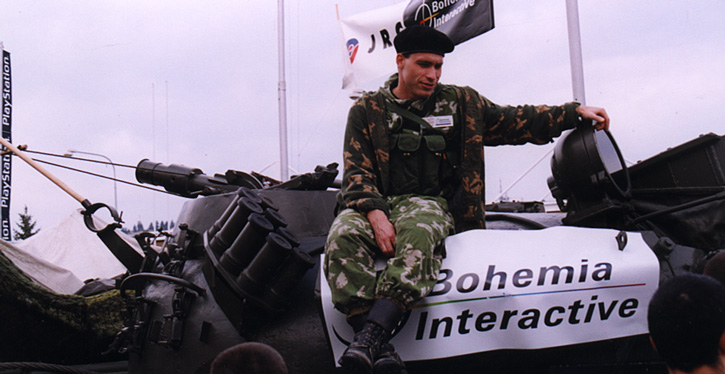
Marek atop his T-55 tank during Invex - marketing looked like this back then :)
The finish line
Marek Španěl recalls that Codemasters’ participation served as a great support system at the time, allowing them to focus on the game they’d been working hard at developing, a game in which they’d managed to create something out of nothing. Conditions at the studio changed often, as did the evolution of the game itself. Taken from a March 2000 article in Bonusweb: “Originally, heavy military equipment was supposed to be in the spotlight, and the soldiers were meant to play second fiddle. However, graphic designers and programmers kept fiddling with them and the result was a variety of soldiers ranked according to their ability.”
When Operation Flashpoint (now called ARMA: Cold War Assault) was released on June 22, 2001, it offered a touch of novelty, as well as a realistic war simulator that hardcore gamers could enjoy. “I never wanted to glorify war," Španěl states. "I was interested in the process of armed conflict, in all its professional breadth.” Marek Španěl’s vision materialized into a game that created a huge wave of enthusiasm around the world. But we’ll talk more about that next time.
As we turn a new page in the story of Bohemia - powered by our new Enfusion technology, we decided to invite Czech journalist Pavel Skoták to cover our 21-year history in a series of articles.
Operation Flashpoint® is a registered trademark of Codemasters


